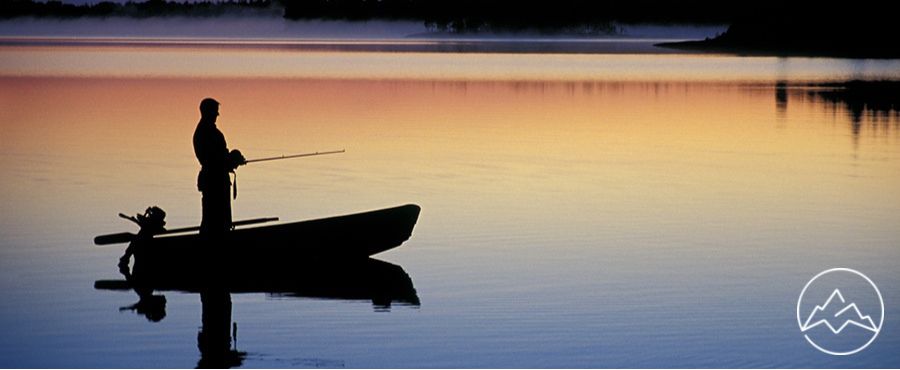Drop shot fishing isn’t a new sport, but in recent years it’s grown in popularity because of publicity in tournaments and new specialized tackle options that make it easy for even a novice angler to tie the rig. Although it requires a bit of finesse, the way the bait presents is so natural that it’s a favorite rig for bass fishermen.
If you’re new to drop shot, there’s no need to be intimidated by the process of rigging and fishing it. Here, we’ll give you tips on how to put together your drop shot setup, including considerations for rods, hooks, and bait. We’ll also walk you through the basics of how to tie a drop shot rig and the best way to fish with it.
Why the drop shot rig is effective
One of the reasons drop shot fishing is so popular is because it works. By making the bait appear as if it’s suspended in water and moving naturally, it lures more bass and makes catching them easy.
All good anglers know, bait that looks alive is the key to attracting fish. With a drop shot rig, the soft, plastic bait is held in a weightless environment where it can move naturally.
You don’t need to move it continuously; the water does the work for you when you’re drop shot fishing. Not only does that take some of the work out of fishing, but it also means you can stay out longer without experiencing muscle fatigue.
There’s also a lot of versatility in where you can fish with this technique. Because you can adjust your leader length and tie your lure above it, you can position your bait perfectly near cover and structure. For example, if you’re fishing in tall eelgrass, you can tie a longer leader so that the bait floats just above it, and fish will see it when they look up to feed.
You might also like: our guide to the best fishing times.
Assembling your drop shot rig
Another advantage of drop shot fishing is that it doesn’t require a lot of gear to do it right. A basic setup will include:
- Rod
- Reel
- Line
- Hook
- Weight
- Bait
Here are a few tips to help you choose the right components for your setup.
Drop shot rod and reel
Look for a medium-light, extra fast action rod that will allow you to make a good hook set without snapping your line. Make sure that it’s not too stiff. Flexibility works in your favor when you’re drop shot fishing.
Good reel choices are a 2500 or 3000 and should have an excellent drag system to help the hook penetrate and reel in your catch.
Drop shot line
Anytime you use a technique that requires finesse; your line is an essential part of your setup. One potential drawback of this method is that your line can get twisted, especially if you’re using only mono or fluorocarbon line.
To help avoid that, outfit your rig with a combination of light braid on your mainline and then an additional 10 feet of a high-quality fluorocarbon line. This way, you’ll avoid any potential issues and also still reap the benefits of line invisibility in the water.
Drop shot hook
Although there are dozens of different options to choose from, there are three different types of drop shot hooks that consistently perform well. They are:
- Octopus style hooks
- Straight shank O’Shaughnessy
- Spin shot/swivel shot
Each has its pros and cons, but regardless of what you choose, make sure that you select a model that is both sharp and heavy enough to perform without breaking when you reel in your catch.
Drop shot weights
Select a weight that offers a secure line cinch that won’t break or come loose and that’s the right size and shape for the job.
Cylindrical or teardrop shapes perform well if you’re learning how to drop shot, and they are less likely to snag or break off during the process.Choose a weight that’s heavy enough to perform well in your environment. One-quarter-ounce weights are usually sufficient for normal conditions, but if you’re fishing in deep water or a windy location, a heavier weight might be needed to keep your bait hovering appropriately.
In those cases, up to a three-eights-ounce weight might be required.
Drop shot bait
The best bait for drop shotting is a very personal choice, but there are a few that are popular because they work well, and fish flock to them.
The most common types are:
- Finesse worm – classic
- Senko worm – unique movement pattern
- Shad-style bait – best when fish are feeding on minnows and shad
- Craw bait – realistic crawfish movement
- Creature bait – different movement types to entice finicky fish
No matter which you choose, it’s always smart to have a few different options in your tackle box to allow you to adjust if your normal go-to isn’t getting results.
Tying a drop shot rig knot
Another essential skill you’ll need to know before you get started is how to tie a drop shot. Here are quick step-by-step instructions on how to do it right.
Start with a Palomar knot as your base that has a long tag end. Determine how far you want your bait to present from the bottom and then measure twice that length of the line. Double it and then thread the end of the loop through the eye of your hook.
Next, tie a loose overhand knot to position your hook hanging at the bottom of the loop you just formed. Grip the knot between your forefinger and thumb and then thread the end of the loop over the hook. Slide it above the eye, and then tighten it down.
All that’s left to do is attach your weight and bait. Then you’re ready to fish.
FAQs About Drop Shot Fishing
What kind of tackle is best for drop shot fishing?
How do you create a proper drop shot rig?
What types of lures and baits are most effective for drop shot fishing?
What techniques should be used to ensure maximum success when using a drop shot rig?
Are there any safety tips or considerations that anglers need to keep in mind when using a drop shot rig?
Before you go
Drop shot fishing is a skill anyone can master. Not only is it an effective method, but it’s also a lot of fun.
You only need a few critical pieces of gear for a great starter rig, and you can make small adjustments to your setup that will allow you to fish in a variety of environments and locations.
Make sure to choose the tools that are right for the job, including the right line to avoid getting twisted in the water. Practice tying your rig knot before you set out to make sure you have the skill down pat. From there, all that’s left to do is head to your favorite fishing hole and reel in your catch.



